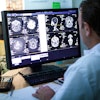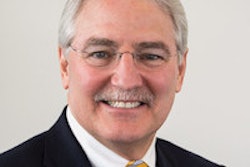
As the U.S. government tries to improve the way healthcare is delivered, the talk is all about evidence-based medicine. But shifting to this framework won't help unless radiology departments are managed the same way, according to a presentation at the AHRA annual meeting in Washington, DC.
"Out of 198 nations, we're No. 65 in terms of our healthcare quality," presenter Lynn McVey, chief operating officer of Meadowlands Hospital Medical Center in Secaucus, NJ, and founding partner at consulting firm Imaging Fusion, told AuntMinnie.com. "And we rank No. 1 in spending the most money on healthcare. To correct this, we need evidence-based care and management."
What is evidence-based management? It relies heavily on metrics, according to McVey. An evidence-based practice identifies a problem, collects data on how things work in the practice itself, and compares that data to both internal and external benchmarks; in contrast, traditional practice management depends on the manager's professional experience and personal opinion. What is now an inefficient way of managing healthcare delivery started in 1965, when President Lyndon Johnson signed Medicare into law, she said.
"When Johnson signed that bill, he launched an assured payment industry," she said. "Managers between the ages of 55 and 70 came up during that time, when money for healthcare flowed freely. They like to rely on their personal experience, their education -- no matter when they graduated -- and their gut instinct. But money isn't flowing freely now, and this kind of management just isn't effective."
When traditional practice management tools are replaced with evidence-based ones, wasteful and expensive practice variations are discovered, according to McVey. She gave session attendees an example from Meadowlands:
2010: The hospital was losing $12 million per year.
2011: After evidence-based management tools were put in place, the hospital showed an $8.4 million profit.
2012: The hospital's Consumer Assessment of Healthcare Providers and Systems (CAHPS) rate improved by 6%. Its infection rate was 0%, and its Hospital Safety Score improved from a "C" to an "A" ranking (the scoring system was developed by the Leapfrog Group and is based on 28 evidence-based measures of patient safety).
2014: The hospital was awarded its second consecutive "A" for patient safety.
Yes, evidence-based decision-making can take more time, more work, and more critical thinking skills. But management decisions are more effective and accurate, McVey said.
"We conduct rolling audits of our performance, using both internal and external benchmarks," she told AuntMinnie.com. "For example, when we started shifting our management framework, the hospital had over 5,000 incomplete medical record charts. Now, it's more like 200. We just can't have incomplete charts -- not only because it's illegal, but also because we can't bill effectively for services."
How can a radiology practice or hospital department put evidence-based management into place? It's simple but not necessarily easy to change the department management culture, McVey said. Track six basic performance indicators and compare them to internal and external markers:
- Total expenses
- Salary expenses
- Revenue
- Volume trends
- Turnaround
- Productivity
If you find an outlier in your practice, there are a number of factors to consider, she said. Is the total expense amount excessive? Are salary expenses excessive? Is the staffing plan on target? Do overtime or employee absenteeism need to be evaluated?
"Everyone has those data," she said. "This is not complicated. And once you gather the data, you compare them to internal and external markers to find variations. Is salary an outlier? Are you above the national median? Drill down and find out why."
Evidence-based management is crucial, especially because it affects patient care and outcomes, McVey said. In fact, she maintains a national imaging database that is available for other radiology managers to use.
"It's all about tracking your metrics," she said. "But some managers are just too skittish to see how they measure up."




















